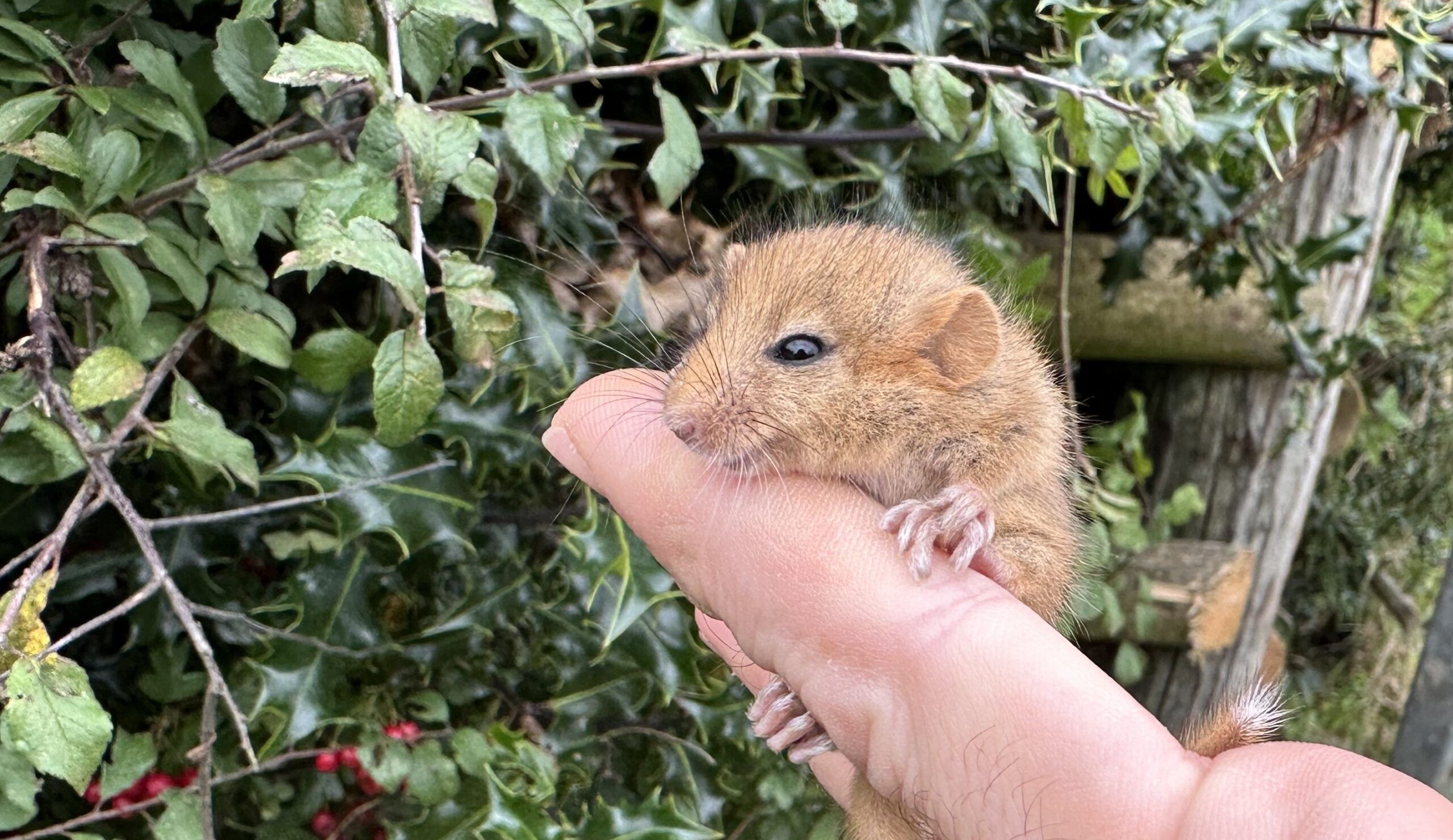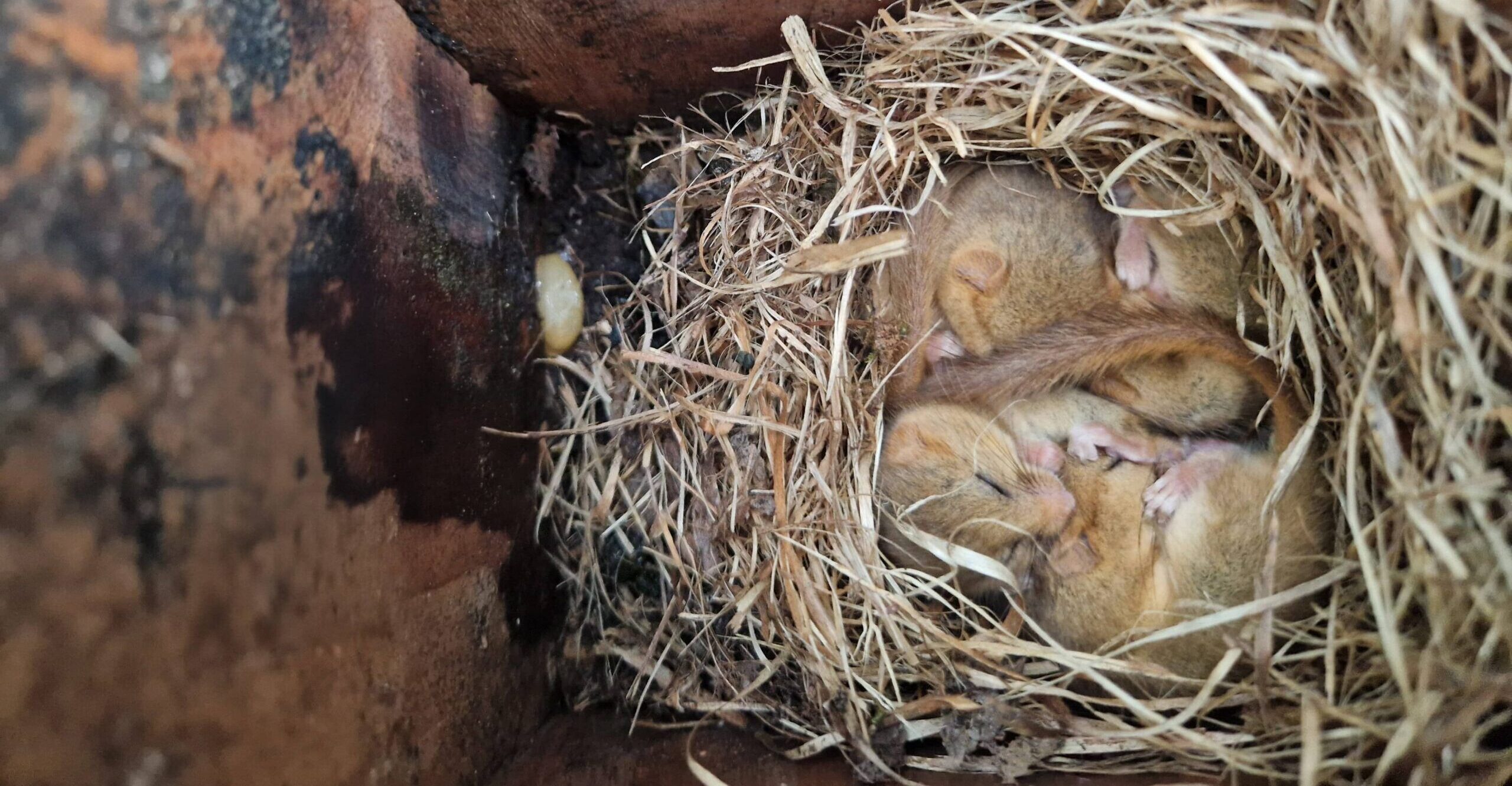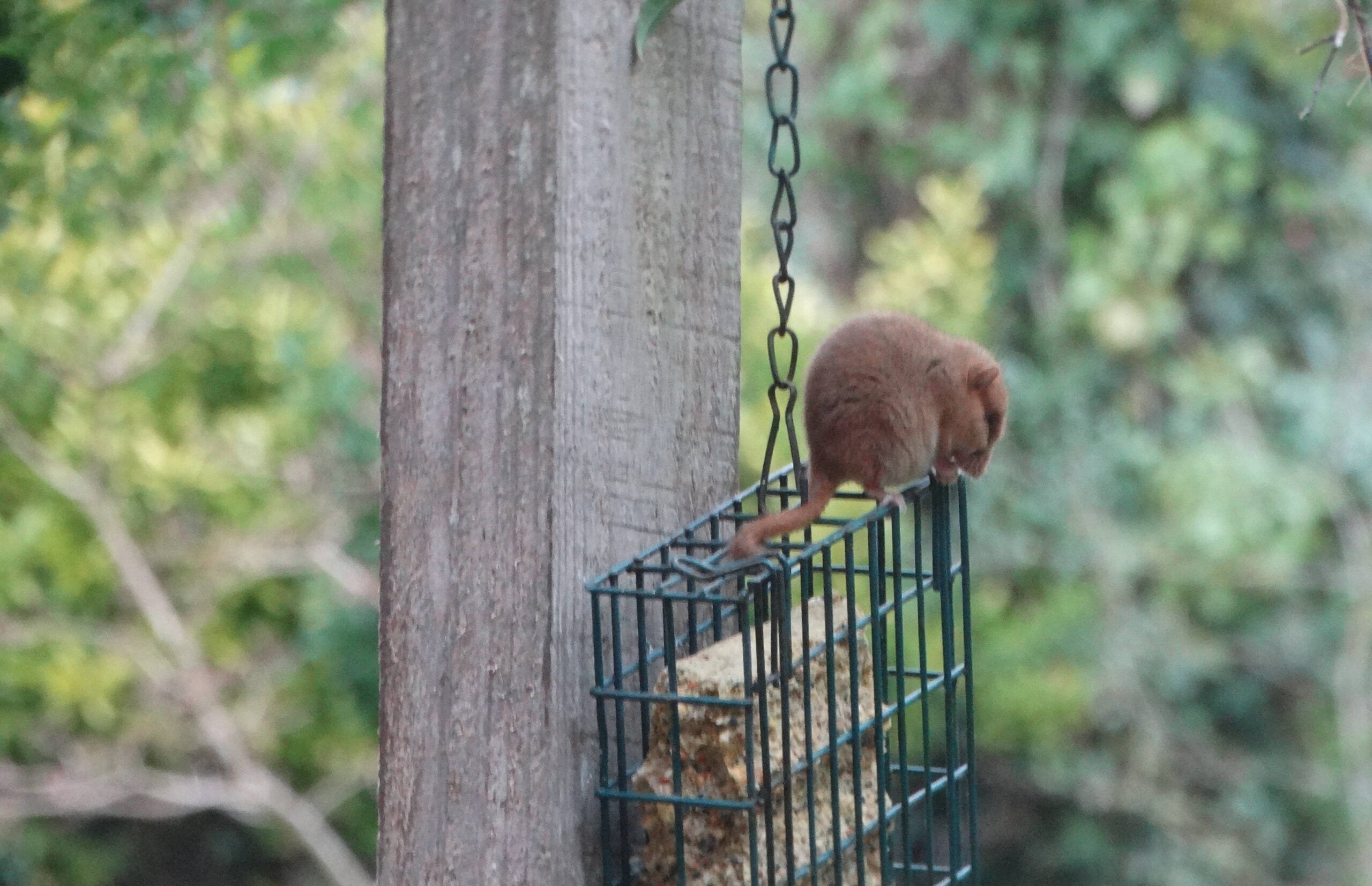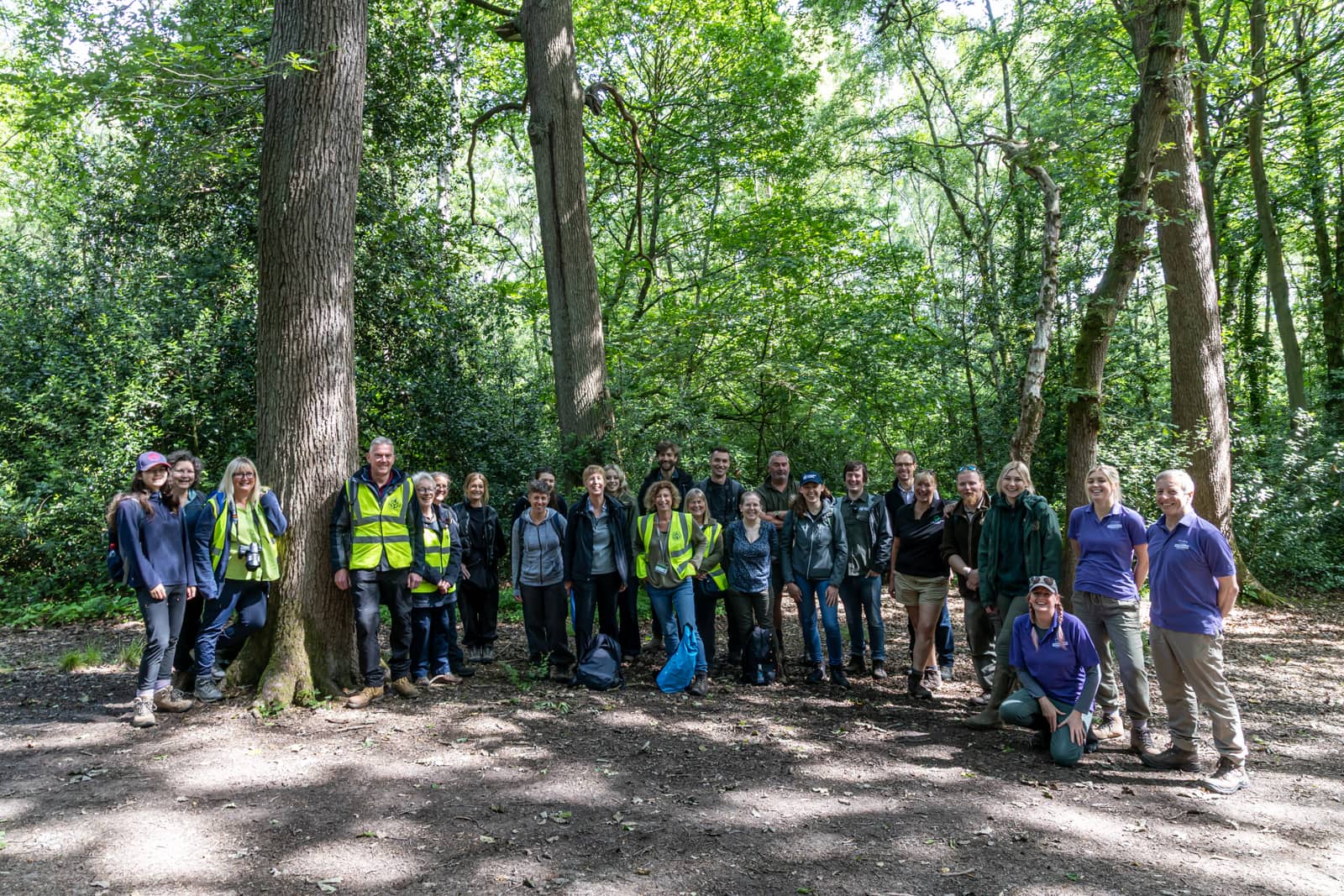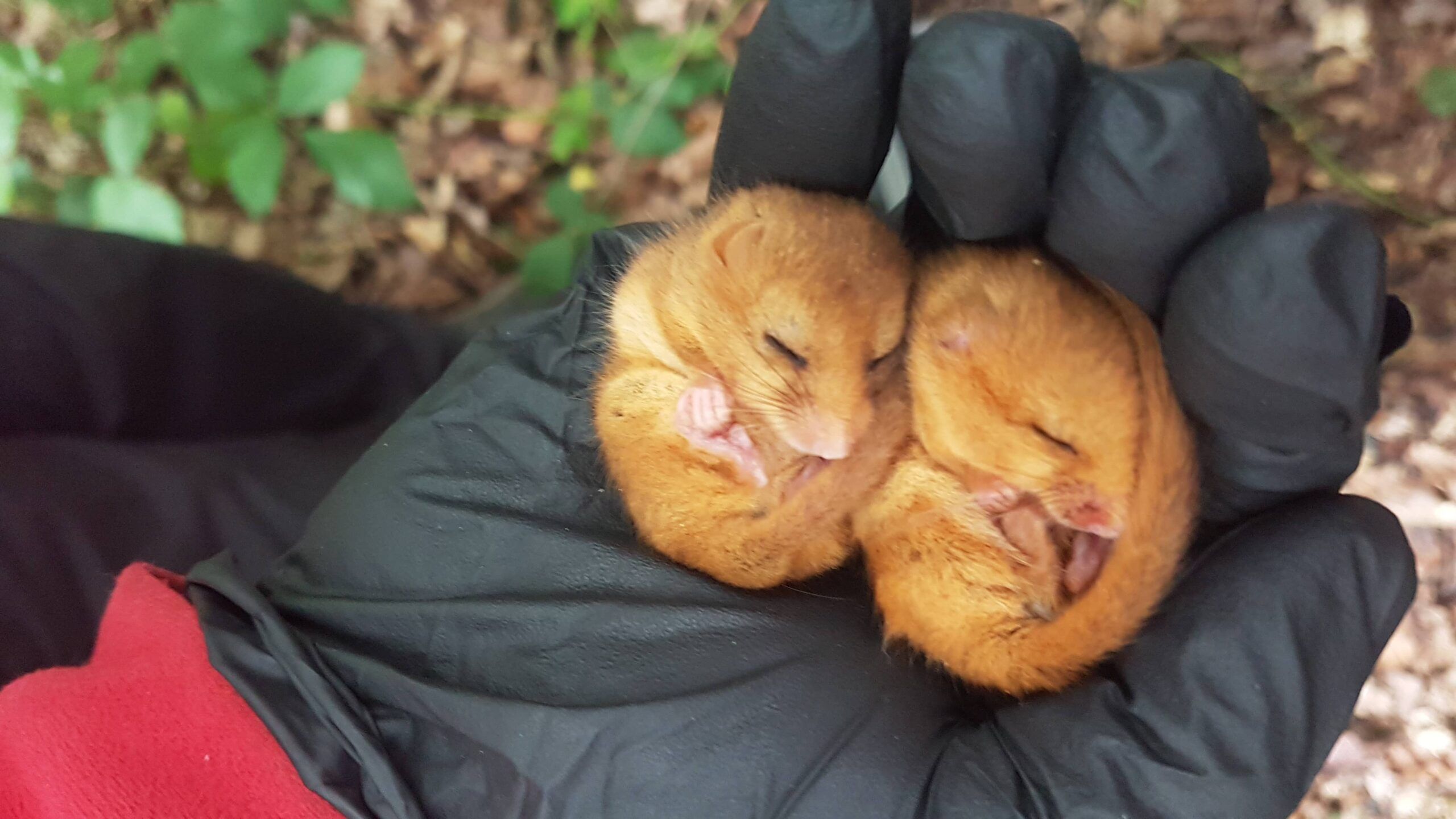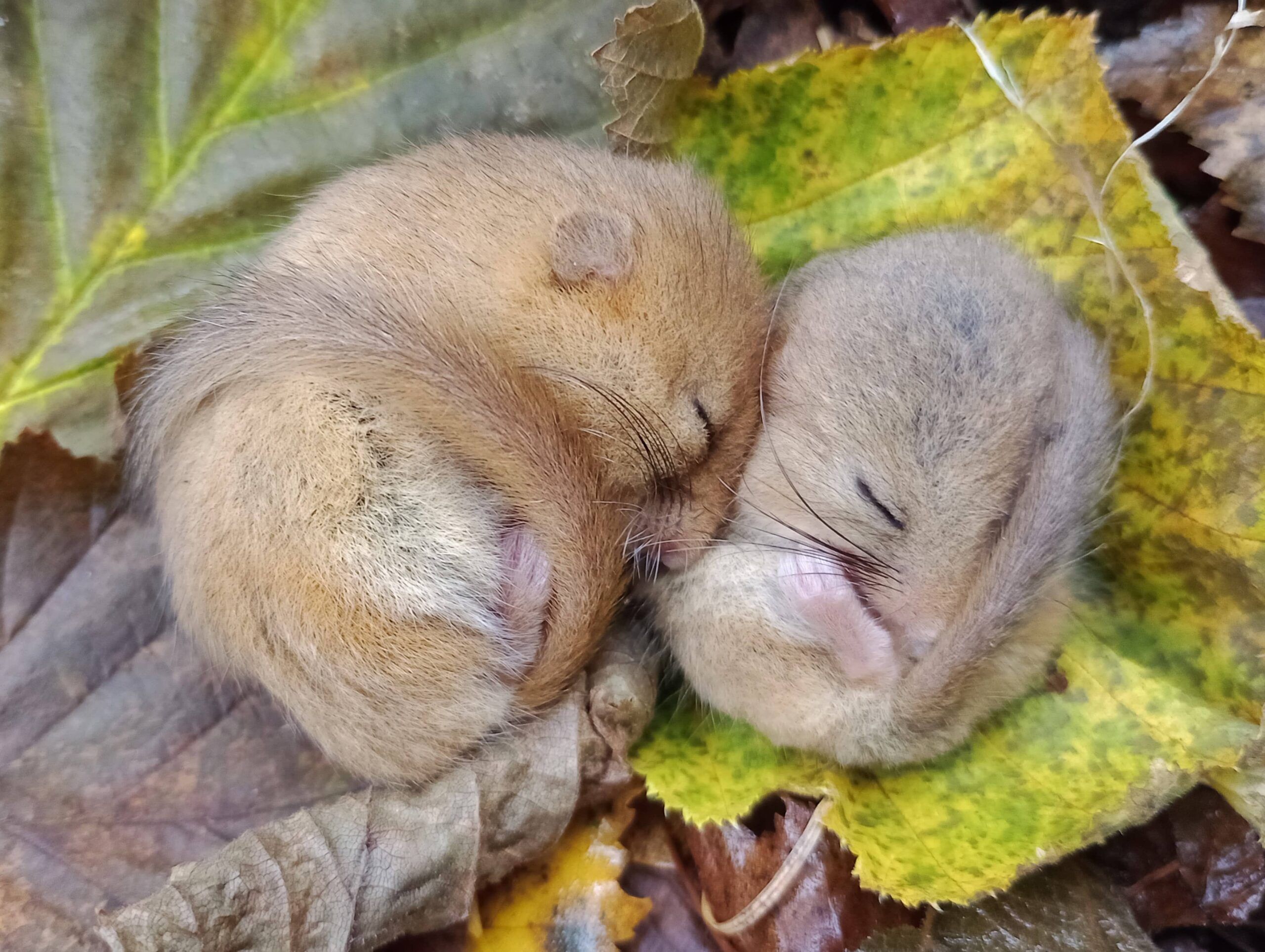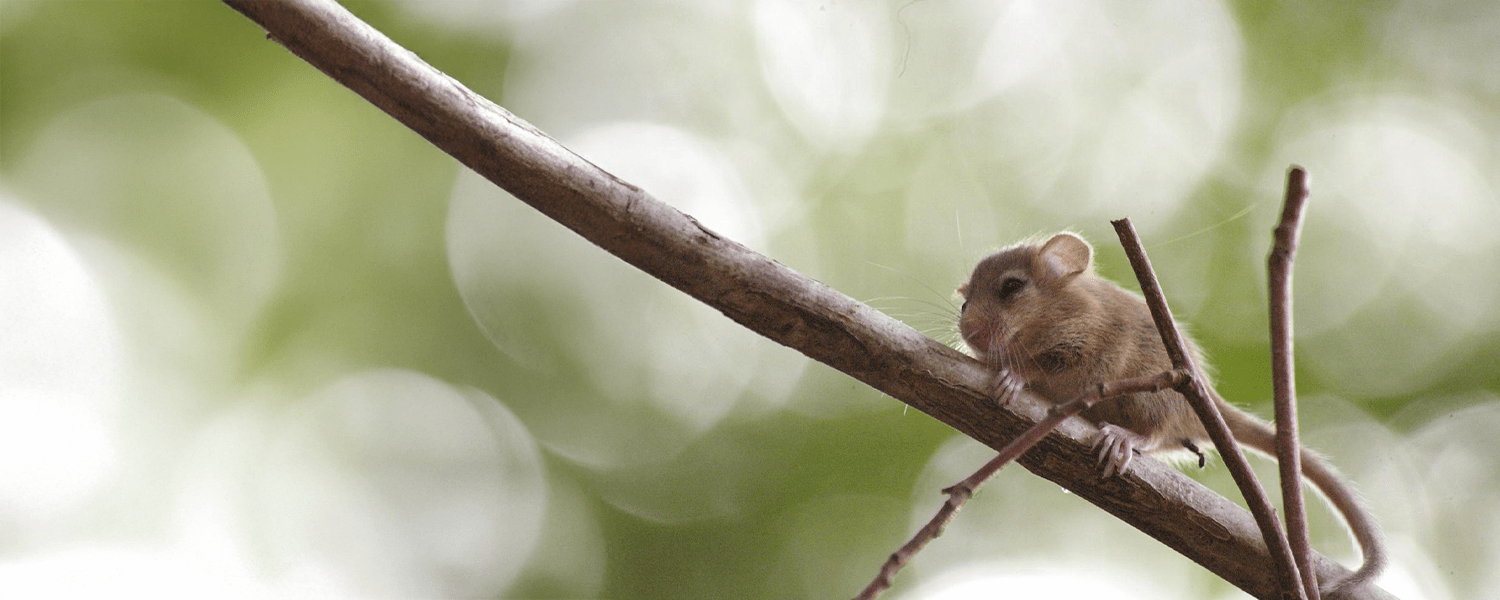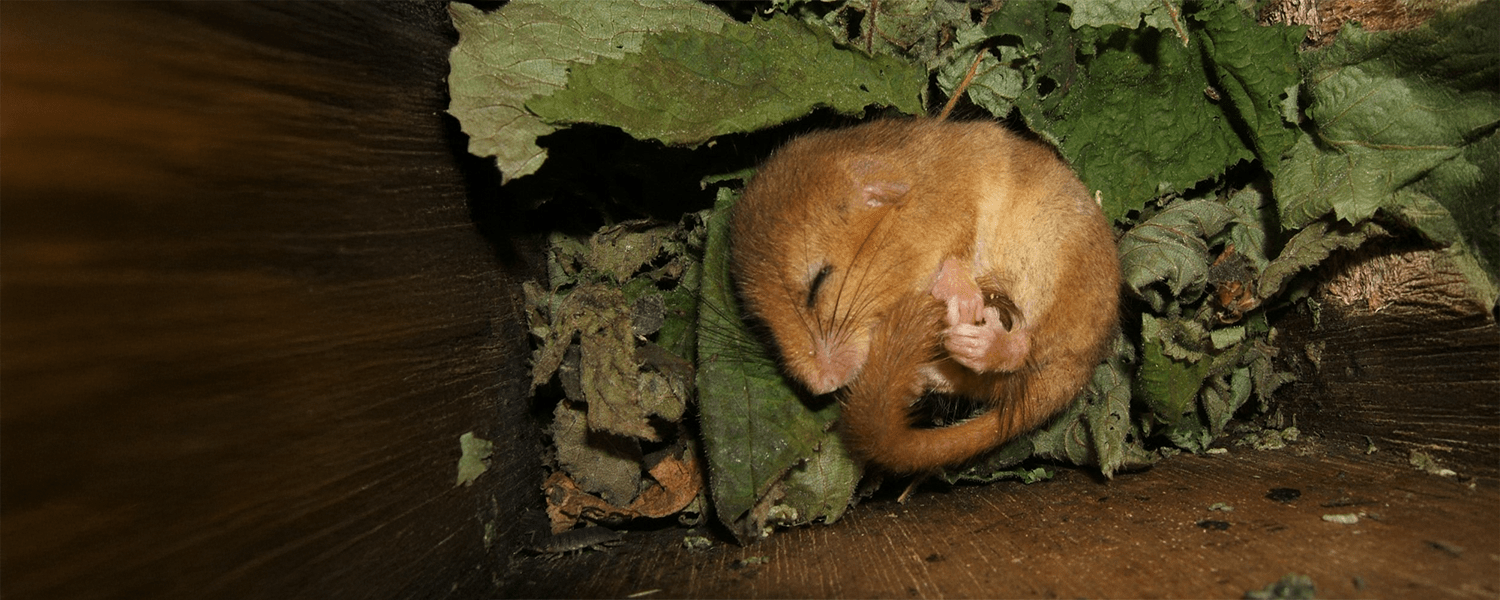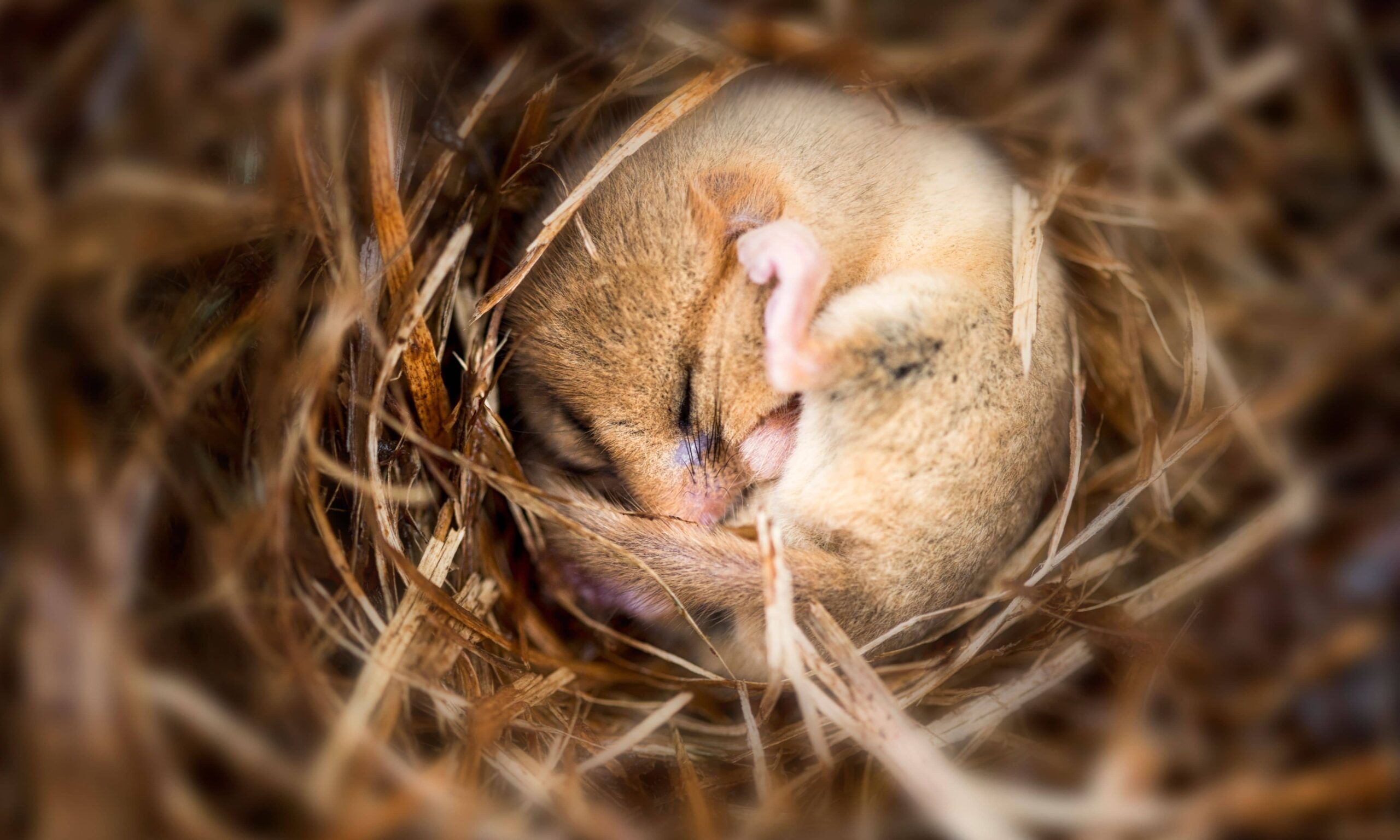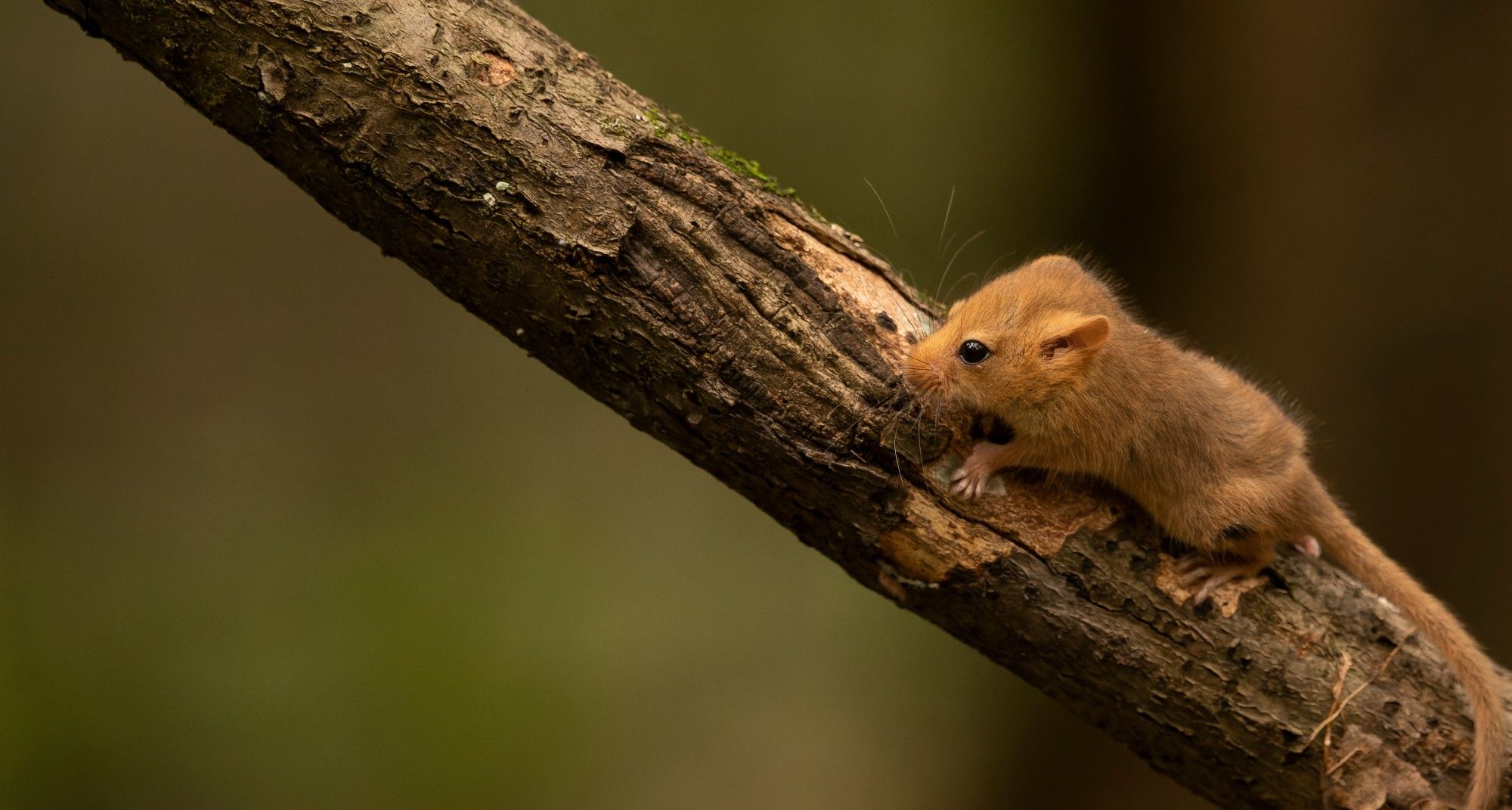Dormice
Search by topic
New dormouse handbooks They have been a long time in preparation, but we are delighted to announce that the third editions of the Hazel Dormouse Conservation and Mitigation Handbooks have …
Read article...If you’ve ever lifted the lid of a nest box on a cool morning and found a curled-up dormouse barely moving, you’ve probably witnessed torpor in action. This fascinating state …
Read article...Historical records Hazel dormice are small, shy, and nocturnal, spending most of their lives in trees and shrubs. These traits make them difficult to find and even harder to monitor …
Read article...Jen Bousfield has been monitoring dormice in five woodlands in Devon since 2010. Earlier this year she had a close encounter with a dormouse that she wasn’t expecting: One evening …
Read article...PTES staff, volunteers, and conservation partners unite to restore a cherished native species in Leicestershire In March 2025, excitement rippled through the Bradgate Park Trust volunteer team. A new species …
Read article...People’s Trust for Endangered Species (PTES) and NatureSpace are collaborating to develop survey methodology and protocol to produce a more robust map of dormouse presence and distribution within a county. …
Read article...Landmark conservation effort aims to restore rare hazel dormice, classified as ‘Vulnerable’ on the IUCN Red List for Britain’s Mammals, to combat the national decline of 70% since 2000 This …
Read article...Returning dormice to Leicestershire This week, we’ve reintroduced over 20 rare hazel dormice into a secret woodland location in Leicestershire, creating the county’s only known population of the tiny mammals. …
Read article...Many species that are habitat specialists – organisms that rely on specific environments or food sources – are declining in what is becoming a worrying trend. One such specialist facing …
Read article...Overall 2024 was a warm and unsettled year for the UK. It was the fourth warmest year on record in Britain. Eight months had temperatures above their usual average, with …
Read article...Bridging the knowledge gap Hazel dormice have long been the focus of conservation efforts in Britain. In the 1990s Pat Morris and Paul Bright studied them, laying the foundation for …
Read article...Lily is a member of the Nottingham Wildlife Trust Keeping it Wild youth team. Having done a diploma at Brackenhurst, Lily has been accepted at Bangor University to study ecology …
Read article...
